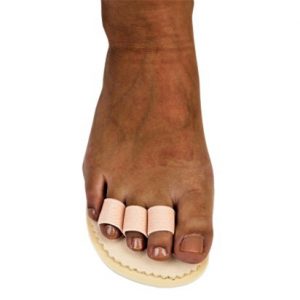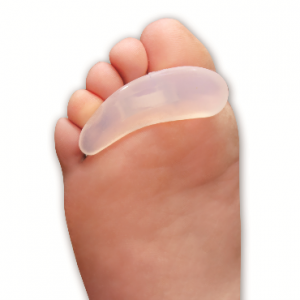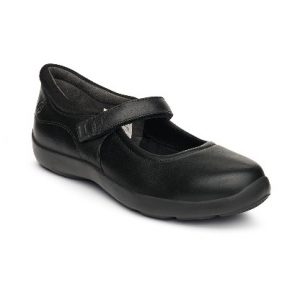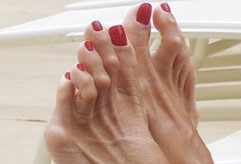 Do you experience?
Do you experience?
- Pain in the small joints of your toes
- Rubbing of the toe joints against the top of your shoes
- Difficulty or pain while walking in footwear
Do you have?
- Redness or callusing on the small knuckle joints of your toes
- Visibly pronounced tendons across the top of your feet
- Angulation of the toes in either direction, especially the big toe
There are a variety of toe deformities that can develop including: bunions, hammer toe, claw toe and mallet toe. The classification of these deformities depends on the joint that is affected and whether it is flexed or extended.
Steps to take:
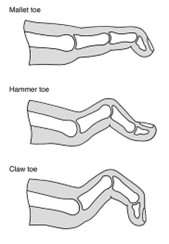 Seek an assessment from a Certified Pedorthist. There are many causes of toe deformities (genetic, biomechanical, neurological). It’s important to determine the cause and treat appropriately (custom orthotic, toe crest, metatarsal pad, toe pads, splinting, etc.).
Seek an assessment from a Certified Pedorthist. There are many causes of toe deformities (genetic, biomechanical, neurological). It’s important to determine the cause and treat appropriately (custom orthotic, toe crest, metatarsal pad, toe pads, splinting, etc.).- Make foot fitting footwear a priority! Find shoes with adequate depth, width, length, and soft material. Lightweight footwear is also important, especially as we age and our strength decreases.
- When to seek additional advice (referral for surgery): if the toe deformity is painful, makes walking difficulty and has become a fixed deformity (no longer flexible) it is time to seek the advice of an orthopaedic specialist who will further discuss treatment options.
To speak with a professional about treating a toe deformity, contact us to book an assessment today.

